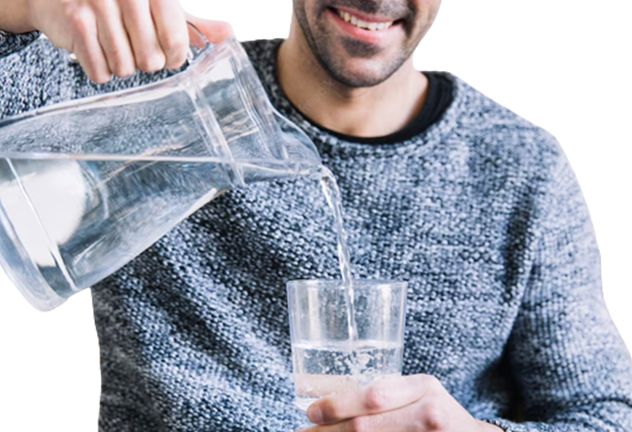Marien GarzaR.D. – Member, Dietetic Advisory Board and Outer Nutrition Advisory Board
The human body is a fascinating machine, and so are its mechanisms and processes. One of the most interesting ones is the immune system: learning how our body defends itself against disease and infection has intrigued humans for millennia.
One of the earliest immunological observations recorded is the one by Thucydides, a Greek historian and military man who around 430 B.C. noted that there were people who, during an outbreak of plague in Athens, were lucky to recover and did not contract the disease a second time.
The modern study of the immune system began with scientist Luis Pasteur in the mid-19th century, when it was scientifically identified as a protector against infectious diseases. From then on, research has become more refined, and new discoveries are made regularly.
For example, during the past 20 years, researchers have discovered the immune system’s crucial role in development, reproduction, and wound healing.
How to Develop a Healthy Lifestyle to Support the Immune System
The importance of the immune system to our overall wellbeing is obvious, so take care of it. What we put in our bodies, as well as how we take care of ourselves, all contributes to our well-being. Remember, nutrition doesn’t prevent illness but helps maintain a normal, healthy body’s systems. Nutrition is not a substitute for medical care. Here are 5 personal wellness and nutrition habits to support your immune system:
1. Maintain a balanced diet.
When it comes to the relationship of the immune system with nutrition, there are some key aspects to keep in mind:
- Eat foods rich in antioxidants, vitamins (mainly A, C, D, and E), minerals, and phytonutrients.
- Consume high-quality protein, whether from animal or plant sources.
- For carbohydrates, choose unrefined, natural ones. These good carb sources include whole grains, beans, fruits, and vegetables, which are all excellent sources of fiber, vitamins, minerals, and phytonutrients.
- Don’t forget the importance of consuming beneficial fats, such as omega-3 fatty acids. Omega-3’s reinforce the positive function of the different cells that comprise the immune system, such as leukocytes, large granular lymphocytes, and macrophages.
Avocado is another great source of unsaturated fats and may also support brain function. Try to find ways to include it in your diet. Here are some examples:
- Add it to your favorite protein shake or smoothie.
- Make an avocado toast.
- Use it instead of mayonnaise in tuna salad.
- Make guacamole.
Here in Mexico, we use this ingredient in many of our dishes. In fact, we are the world’s largest avocado exporter. In 2020, Mexican avocado exports amounted to more than 2.7 billion U.S. dollars. In that year, the United States alone accounted for approximately 80 percent of the value of avocado exports from the country.
2. Wash your hands correctly.
According to the Centers for Disease Control and Prevention, washing your hands can eliminate microorganisms and help avoid the transmission of diseases.
- Wash your hands for at least 30-40 seconds.
- Make sure to follow all the steps: wet, rub, scrub, rinse and dry.
- Wash your hands, palms, nails, wrists, and even forearms.
After washing your hands, apply hydrating cream and paraben-free products to take care of your skin.
3. Rest effectively.
Adequate and healthy sleep time varies with age, but adults should aim to get at least 7 hours of sleep per day. Improving your sleep hygiene habits can help you obtain a better quality rest, which will help to restore any metabolic damage and thus maintain balance.
4. Exercise regularly.
Research has shown the positive impact of exercise on the immune response:
- Exercise can improve defense activity and metabolic health.
- People who engage in moderate exercise training have a lower risk for illness.
- Exercise can have an anti-inflammatory impact.
- Regular exercise improves immune regulation, even as the body ages.
Doing physical activity for at least 30 minutes five times a week is a sound recommendation for adults to maintain a healthy lifestyle.
5. Drink enough water.
Good hydration is essential to maintain the balance of minerals and fluids that our immune and respiratory systems need to work properly. Water constitutes around 70 percent of our total body mass as adults and is distributed both in intracellular (65 percent) and extracellular (35 percent) spaces, which is why it’s so important to keep hydrated.
Water:
- Is essential for nutrient absorption.
- Is a key component of lymphatic fluid, which contains specialized white blood cells, called lymphocytes, that help the body fight infection.
- Helps maintain healthy mucous membranes, which protect the areas inside of your body that are exposed to air – nostrils, mouth, and throat.
The immune system plays a key role in keeping your body in balance and well, so taking care of it will go a long way.
Marien GarzaR.D. – Member, Dietetic Advisory Board and Outer Nutrition Advisory Board
Marien Garza is a registered dietitian and a member of the Dietetic Advisory Board and the outer Nutrition Advisory Board. She has been a consultant for Herbalife Nutrition Mexico since 2014, helping train independent distributors and members on the importance of nutrition. Marien has participated in numerous research protocols and co-authored articles published in national and international journals. She is the author of three books on menopause, osteoporosis, and childhood obesity. She holds a Bachelor of Nutrition and Food Sciences from the Iberoamerican University in Mexico, and a Diploma in Health Coaching from New York’s Institute of Integrative Nutrition.



